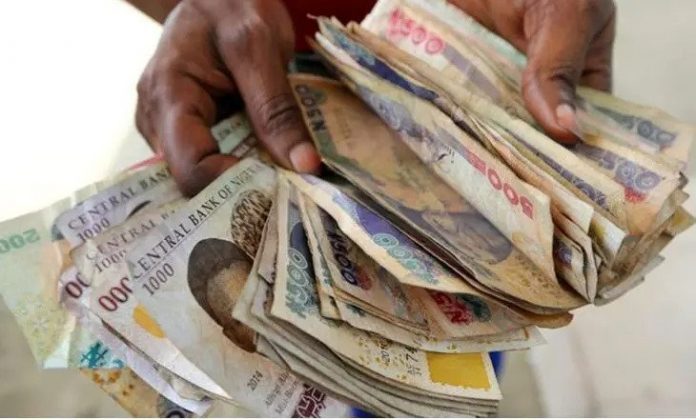The naira, the indigenous currency of Nigeria, has been recovering since the demand shock that began at the start of the subsequent mild inflows into external reserves through the Investors’ and Exporters’ foreign exchange (FX) window.
The currency rate in the Investors and Exporters window increased by 1.01% to N782.68 per United States (US) dollar, according to information gathered from FMDQ.
The mismatch between the supply and demand of foreign currency, however, caused the spot rate in the parallel market where dealers exchange US dollars for N1,150 to deteriorate. The naira increased by 1.1% from the previous day’s rate of N790.68 per dollar to the spot rate of N782.68 at the Investors and Exporters window.
According to Refinitiv statistics, the foreign exchange rate on Tuesday reached N980 during an intraday trading session before closing close to N850 per USD. An exchange rate report from the FMDQ OTC FX platform revealed that currency trading activity on the official market had returned to normal during the previous two days.
According to experts, the Naira’s performance in the parallel market was less favorable, declining by 4.55% to settle at N1,150 versus the US dollar. This week, Nigeria’s external reserves saw foreign currency inflows as oil prices rebounded following the Israeli-Gaza conflict. Over three days, the country’s gross foreign reserves grew marginally to $33.242 billion.
Nigeria is also expecting an inflow of $1.5 billion obtained from the World Bank by the government to bridge the revenue and spending gap. In the commodities market, the price of oil experienced a minor recovery attempt but ultimately succumbed to the prevailing pressure, hovering around the $90 price range.
Specifically, West Texas Intermediate (WTI) crude was priced at $87.35 per barrel on Thursday, while Brent Crude remained steadfast at $90.40 per barrel. Market participants were closely monitoring Russia’s plans to increase its supply to China and contemplating the feasibility of sustaining this supply arrangement for seven years.












